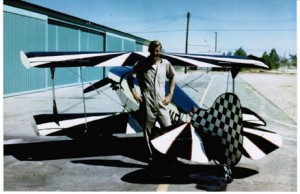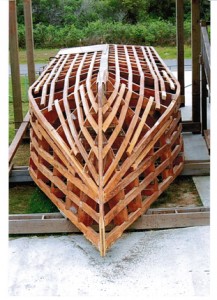After reading “Local Main Builds PT Boat” in the 2010 Veterans Day edition of Dolphin Talk, a brightened face glowed with surprise, reading the narrative of a real PT Boat captain’s experience in the Strait of Surigao during World War II. (Dolphin Talk, Nov. 12, 2010, page 7) The real PT Boat skipper’s name is Harrell F. Dumas, Lt. (jg) U.S. Navy Retired.
The reader needs to know that the battle in the Strait of Surigao and Battle for Leyte Gulf were one and the same fight. The Battle of Leyte Gulf was the largest-ever sea battle in naval history. A mind boggling 282 American, Japanese, and Australian warships engaged in the waters surrounding Leyte. Nearly two hundred thousand men participated in the fight that spanned a geographical area of more than a hundred thousand square miles. During the three-day battle, this area became the sight of the last clash of dreadnoughts, and the first and only time that an American aircraft carrier was sunk by gunfire.
However, if all of the above is true and it is, why is Leyte Gulf not a household word like Pearl Harbor? Why have fewer Americans heard of the Battle of Leyte Gulf than the Battle of Midway or the D-Day invasion at Normandy?
The answer lies in the timing. Leyte Gulf occurred late in the war, after several years of conflict in which great battles had become commonplace. Battles like El Alamein, Stalingrad, the liberation of Paris, Midway, Guadalcanal, Normandy and Anzio were by then places indelibly embedding in the language. And too, the Battle of Leyte Gulf happened when most of America had accepted the ultimate victory over Japan as simply a matter of time.
The Battle of Midway was widely accepted as a dramatic reversal of what had become a long losing trend, now a focal point for change. The D-Day invasion at Normandy was seen as the true beginning of the end of the war in Europe. Leyte Gulf was just another step along the way, a continuation of a trend that was accepted as normal and inevitable – but lacking the drama of earlier battles. And after the battle, Leyte Gulf was eclipsed by events like the near reversal at the Battle of the Bulge, the ferocious fighting at Iwo Jima and Okinawa, and the cataclysmic dropping of atomic bombs on the industrial cities of Hiroshima and Nagasaki.
Everyone has heard of General Douglas MacArthur and the motto of determination that rang during, and for years after, the war: “I shall return.” Everyone has seen the memorable wading of General MacArthur from the landing craft to the shore. But when did this actually occur and where, but at Leyte on the afternoon of 20 October 1944. On October 17, the United States Army landed successfully at Leyte, establishing a beachhead seventeen miles long and four miles deep. The immediate response was to drive the Americans from Leyte and to recapture the beachhead.
The sea battle that followed was initially of Japanese design and was to culminate at Leyte Gulf. It took place from 23 – 26 October 1944, in various bodies of water in and around the Philippine Islands.
First, some background:
1. Almost three years of fighting had passed since the bombing of Pearl Harbor.
2. In the Pacific, the Americans were on the offensive. The Japanese had lost four aircraft carriers at the Battle of Midway and three additional aircraft carriers in an ill-fated attempt to counter-attack the American retaking of Guam in July 1944 — a fight better known as the Battle of the Philippine Sea — yet Japan remained a formidable sea power.
3. Since Pearl Harbor, Japanese military forces occupied a strategic majority of the Philippines, an island group that consisted of some 7,100 island and atolls.
4. The fast moving PT boats were ideal for patrolling in-and-around the numerous islands; surveying enemy shipping.
5. The American plan was to retake the Philippines, and the United States Navy readied virtually every combat vessel in the arsenal.
The approaching Japanese task force consisted of a divided battle group. Two squadrons of ships came from the north, from Japan and Formosa and two from the southwest, from Borneo and the South China Sea. The northern force divided along the east and west coasts of the Philippines. The west coast force would meet the force approaching from the South China Sea and together would continue through the Strait of Suriago and north of Leyte Gulf. The central force from Borneo would steer along the Palawan Passage into the Sibuyan Sea, and through the San Bernardino Strait. Once through the Strait they would rendezvous with the second northern force and continue south. All forces would converge at Leyte Gulf, at about the same time. The Japanese tactic represented an attack pattern known as the pincer attack — two or more forces hitting an enemy force from different directions. The American ships and aircraft that were supporting the landing at Leyte would be forced to engage the powerful Japanese naval force and be smashed. Then, the Japanese could challenge the landing.
However, at the same time the Japanese central force of twenty-eight ships was traversing the Palawan Passage, the eyes of the United States Navy were watching through the periscopes of USS Darter and USS Dace. The submarines Darter and Dace followed on the surface until in position, transmitted position reports, submerged, and attacked. Two Japanese heavy cruisers went to the bottom; a third was heavily damaged and returned to Borneo under the escort of two destroyers. All told, five Jap ships were immediately removed from action, still four hundred miles from the San Bernardino Strait. This action together with airplane reconnaissance in the north would alert the American fleet to the presence of four separate attacking forces.
Meanwhile, the two Japanese forces converged and approached the Strait of Surigao. Unbeknownst to the commander of this force, the Americans were waiting and prepared. On top of the Straight were the heavy guns of the battle line – six battleships, four heavy cruisers, and four light cruisers. The narrows of the Strait forced the Japanese squadron to form a single column of ships, but to reach Leyte Gulf, the single column of ships first had to run the gauntlet. Twenty-eight American destroyers and thirty-nine PT Boats were on patrol, with the weapon of choice the torpedo.
The PT Boats divided into thirteen sections of three boats each — seven sections along the south side of the Strait and six on the north. On top of the Strait, gunnery officers seeking firing solutions for Japanese targets would evaluate radio chatter between PT Boats. The Americans were ready.
PT 131 was first to make contact on the night of 23 October. The other boats quickly went into action. Darting through the darkness at twenty-five knots, the forty-five-ton PT Boats identified Japanese ships and reported course and speed to convey firing solutions. Too small to be seen on radar, the Japanese warships turned to searchlights for illumination. The PT Boats drew fire – throwing the enemy off guard – harassed, and carried the fight for three hours, relentless in positioning enemy targets. However, the PT Boats did little direct damage. Reports of only two torpedoes striking Japanese ships, with one ship later sunk. However, the destroyers accomplished what the PT Boats did not, firing hundreds of torpedoes – detaching ships from the attacking convoy. But the Japanese squadron persisted, maintaining battle-speed under cover of darkness, driving through the Suriago Strait to Leyte Gulf – into the jaws of the waiting American trap.
After Japanese losses were tallied, Japan would never again be a naval threat. Deprived of the sea power she routinely enjoyed. The dream of world conquest smashed. The American victory was decisive and brought into focus the continuing fight, clear that many lives would be lost on the advance to Tokyo – and the Japanese knew that, too.
Japan’s surviving warships would withdraw, some to anchor, unable to plunder, because without sea dominance, oil could no longer be channeled from the East Indies and Southeast Asia to Japan. And without oil, ships were unable to move; to transport troops, supplies, or to operate the escort vessels that guarded the tankers. In the months that followed, the complete annihilation of Japanese merchant shipping, as well as the remaining naval sea force, would be credited to the not-so-silent presence of the American submarine.

Larry Wegeman, in his thirties, with the Pitts Special he built.
Larry Wegeman, who wrote this article, has always had an interest in history. “All my cousins were in the war. For some reason, my father married late in life, making me too young for the conflict. Later, influenced by Movietone News and all the Hollywood films, my interest redirected to study broader, historical points of view,” he explained.
Wegeman is the Port O’Connor man building a PT type craft on Tyler Avenue.
It seems he enjoys building.
When in his thirties, he built an airplane, a Pitts Special, from plans (photo on page 5). A Lycoming 0-320 (160 hp) engine powered the 720 lb. bi-plane. The seventeen-foot wingspan extended both sides of the open cockpit. The bird lacked no shyness in moving around the sky. He enjoyed flying, and after flying off the required time, the FFA certified the bi-plane Experimental. Even though he did the building, Wegeman never felt it was truly his. It would always be a Pitts, designed and developed by Curtis Pitts of Homestead, Florida.
Now, Wegeman wants to build a boat, a wooden boat, working with wood rather than metal or plastic. He wants to live on it. But what should the hull look like? Every boat is different. Some hulls are displacement types, some semi-displacement, and others planing. The deeper the hull in the water the more sea-worthy, but on the other hand, the slower the craft. Semi-displacement hulls do not ride as deep, but are faster. Both designs are used as load-bearing boats.
After World War II, the Chis Craft Corporation picked up the PT boat design – the shallow draft and deep-V. Varying in length, these boats got up-on-the-step and planed. At the time, it seemed every pleasure craft resembled a PT Boat – high and fast, in a day when the cost of gasoline was of little importance. The planing hull is the faster configuration and horsepower versus weight determines just how fast.
On the other hand, the shallow-draft hull can slam in medium and even light seas. Thus, a deep-V bow is added. When the boat settles from the planing attitude, the bow lowers into the water. Because the bow drops deeply into the water, stability is added to the craft – but at a reduced speed.
The latest photo (below) shows progress on The Endeavor, shown bottom-up, stringers added and plywood being attached. But much work is needed, and Wegeman knows it. “It’ll be two years before the plywood is completed and the hull is fiberglassed.”
Wegeman mentioned, “Instant gratification is for kids. If one really wants to build something worthwhile, it’ll take time. However, it needs to get started, too. For me, I have to say the project started with a dream.” Wegeman stated, “Everything starts with a dream.” He was sure. “Nothing happens that’s going to happen, unless first there is a dream.”
Heads-up for further progress!

Larry Wegeman’s PT Boat in progress.
